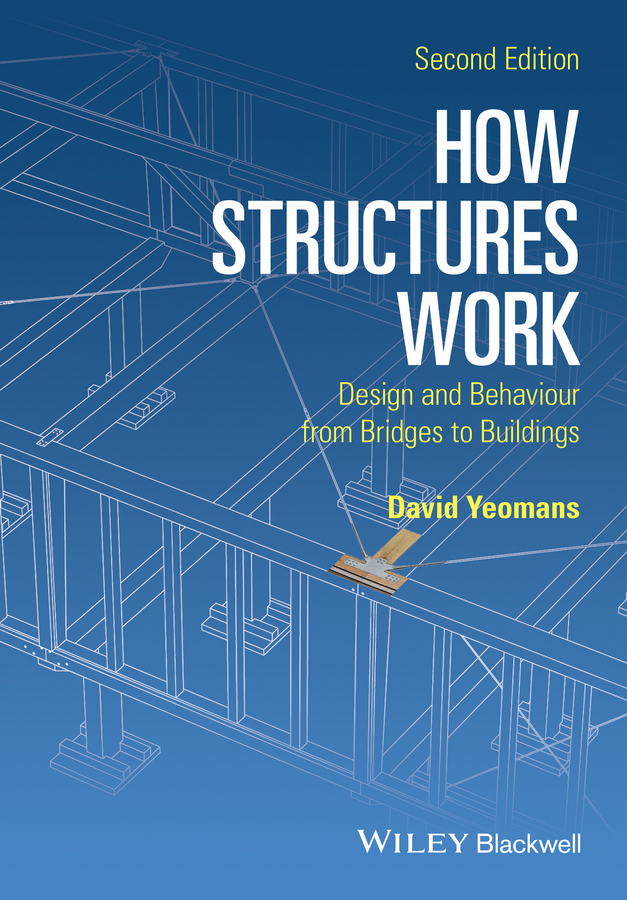Электронная книга: David Yeomans «How Structures Work. Design and Behaviour from Bridges to Buildings»

|
Structural engineering is central to the design of a building. How the building behaves when subjected to various forces– the weight of the materials used to build it, the weight of the occupants or the traffic it carries, the force of the wind etc – is fundamental to its stability. The alliance between architecture and structural engineering is therefore critical to the successful design and completion of the buildings and infrastructure that surrounds us. Yet structure is often cloaked in mathematics which many architects and surveyors find difficult to understand. How Structures Work has been written to explain the behaviour of structures in a clear way without resorting to complex mathematics. This newedition includes a new chapter on construction materials, and significant revisions to, and reordering of the existing chapters. It is aimed at all who require a good qualitative understanding of structures and their behaviour, and as such will be of benefit to students of architecture, architectural history, building surveying and civil engineering. The straightforward, non-mathematical approach ensures it will also be suitable for a wider audience including building administrators, archaeologists and the interested layman. Издательство: "John Wiley&Sons Limited"
ISBN: 9781119012290 электронная книга Купить за 3956.07 руб и скачать на Litres |
Другие книги схожей тематики:
| Автор | Книга | Описание | Год | Цена | Тип книги |
|---|
См. также в других словарях:
Business and Industry Review — ▪ 1999 Introduction Overview Annual Average Rates of Growth of Manufacturing Output, 1980 97, Table Pattern of Output, 1994 97, Table Index Numbers of Production, Employment, and Productivity in Manufacturing Industries, Table (For Annual… … Universalium
art conservation and restoration — Maintenance and preservation of works of art, their protection from future damage, deterioration, or neglect, and the repair or renovation of works that have deteriorated or been damaged. Research in art history has relied heavily on 20th and… … Universalium
religious symbolism and iconography — Introduction respectively, the basic and often complex artistic forms and gestures used as a kind of key to convey religious concepts and the visual, auditory, and kinetic representations of religious ideas and events. Symbolism and… … Universalium
architecture — /ahr ki tek cheuhr/, n. 1. the profession of designing buildings, open areas, communities, and other artificial constructions and environments, usually with some regard to aesthetic effect. Architecture often includes design or selection of… … Universalium
United States — a republic in the N Western Hemisphere comprising 48 conterminous states, the District of Columbia, and Alaska in North America, and Hawaii in the N Pacific. 267,954,767; conterminous United States, 3,022,387 sq. mi. (7,827,982 sq. km); with… … Universalium
Europe, history of — Introduction history of European peoples and cultures from prehistoric times to the present. Europe is a more ambiguous term than most geographic expressions. Its etymology is doubtful, as is the physical extent of the area it designates.… … Universalium
